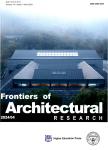Application of AHP and a mathematical index to estimate livability in tourist districts:The case of Al Qasba in Sharjah
作者机构:Department of Architectural EngineeringSustainable Engineering Asset Management(SEAM)Research GroupCollege of EnsineerinsUniversity of SharjahSharjahUnited Arab Emirates Sustainable Engineering Asset Management(SEAM)Research GroupDepartment of Indus trial Engineering and Engineering ManagementCollege of EnsineerinsUniversity of SharjahSharjahUnited Arab Emirates Department of Mathematical and Computational SciencesUniversity of Toronto MississaugaMississaugaOntarioL5L 1C6Canada Department of Architectural EngineeringCollege of EngineeringUniversity of SharjahSharjahUnited Arab Emirates
出 版 物:《Frontiers of Architectural Research》 (建筑学研究前沿(英文版))
年 卷 期:2020年第9卷第4期
页 面:872-889页
核心收录:
学科分类:12[管理学] 120203[管理学-旅游管理] 1202[管理学-工商管理]
主 题:Livability AHP Stratified random sampling Sharjah UAE
摘 要:Urban planners must ensure that urban public spaces are enjoyable to use to create a lively city that expresses their culture and traditions and welcomes social *** study aims to develop a theoretical index for assessing the livability levels in tourist ***,a survey-based study accompanied by a literature review is used to derive criteria for *** addition to using the analytic hierarchy process to develop an importa ncebased hierarchy of criteria,mathematical analysis is applied to derive the livability ***,one of Sharjah s well-known public spaces,Al Qasba Tourist District,is assessed as a case *** study discussed the main concepts and factors of livability in urban public spaces to examine the livable extent of Qasba and the significanee of *** show that the current livability level in Al Qasba is less than 50%,confirming its urgent need for further urban *** study explores the livability assessment criteria and their influencing *** the suggested conceptual livability in dexen ables decision makers to assess the livability level,analyze the in fluencing factors,and suggest solutions to improve the overall livability levels of open public spaces.



